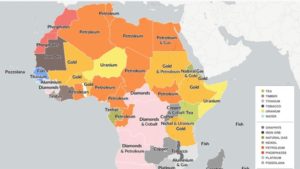
Geneva, Switzerland, June 1, 2018// – African migration could boost growth and positively transform the structure of the continent’s economy according to UNCTAD’s 2018 Economic Development in Africa Report: Migration for Structural Transformation, launched today.
“Population movements across borders often offer individuals a chance for a better life with the social and economic benefits extending to both source and destination countries, as well as future generations,” UNCTAD Secretary-General Mukhisa Kituyi said. “Our analysis shows this to be true for millions of African migrants and their families.”
“Yet much of the public discourse, particularly as it relates to international African migration, is rife with misconceptions that have become part of a divisive, misleading and harmful narrative.”
Historically and in-line with established trends, most African migrants move within the continent: in 2017 19 million international migrants moved within Africa and 17 million Africans left the continent – but the gap is narrowing. Africa is also a migration destination for 5.5 million people who came from outside the continent.
The report follows the stories of Mamadou and Ramatoulaye from Senegal, and Afwerki from Ethiopia. While they are fictional avatars for two different types of migrants – skilled and low-skilled – their stories illustrate the benefits (and pitfalls) that intra-Africa migration has for trade and development on the continent.
In 2017, the top five intra-African migration destinations (receiving countries in descending order) were South Africa, Cote d’Ivoire, Uganda, Nigeria, and Ethiopia (all exceeding 1 million migrants), the report says.
Behind the numbers lies economic analysis that shows the net benefit of migration in Africa.
The contribution of international migrants to GDP was measured at 19% in Côte d’Ivoire (2008), 13% in Rwanda (2012), 9% in South Africa (2011) and 1% in Ghana (2010).
Remittance inflows to Africa rose on average from $38.4 billion (2005–2007), to $64.9 billion (2014–2016). These accounted for 51% of private capital flows to Africa in 2016, up from 42% in 2010. This is why both intra and extra-continental migration are needed for supporting Africa’s structural transformation.
The report provides evidence on the “intimate correlation between two sides of the same coin: migration and trade” said UNCTAD’s Junior Roy Davis, a lead author on the report.
“Africa is on the cusp of tremendous change,” he said. “On 21 March 2018, 44 African countries signed the establishment of the African Continental Free Trade Area and 30 of them signed the Protocol on the Free Movement of Persons.”
He added: “These critical milestones follow the launch of the Single African Air Transport Market in January 2018. In this context the report contributes to a better understanding of the implications of intra-African migration for the continent’s socio-economic transformation.”
Other findings from the report include:
- The average age of Africa’s international migrants in 2017 was 31 years – the lowest median age globally.
- In 2017, female migrants comprised almost half of all international migrants in Africa (47%). The absolute number of international female migrants increased from 6.9 million in 2000 to 11.6 million in 2017.
- Africa hosts the bulk of the world’s refugees and internally displaced people.
The report’s analysis of the role of intra-continental migration in Africa’s development trajectory makes it a reference document that aims to assist in defining an African position in the Global Compact for Safe, Orderly and Regular Migration to be adopted in Marrakesh in December 2018.
African Eye Report


